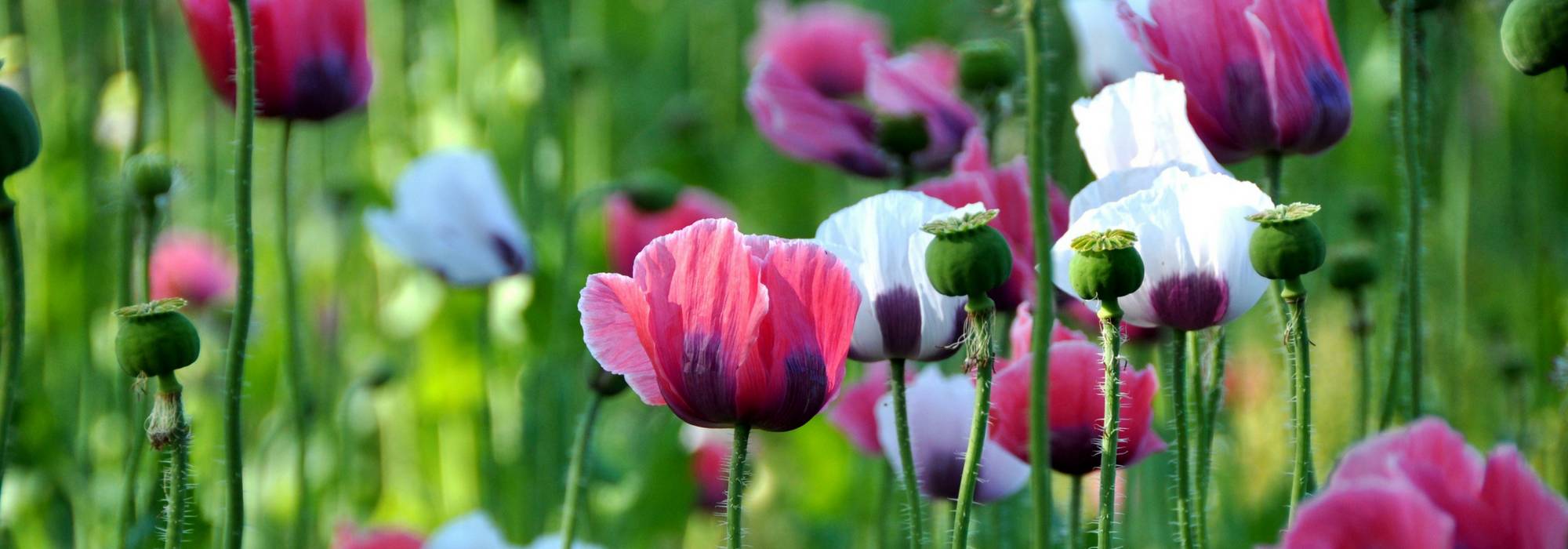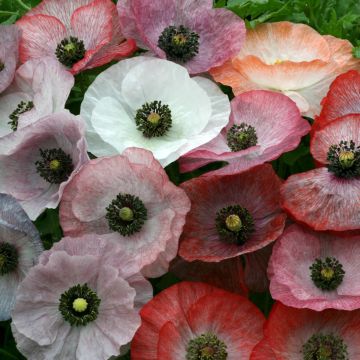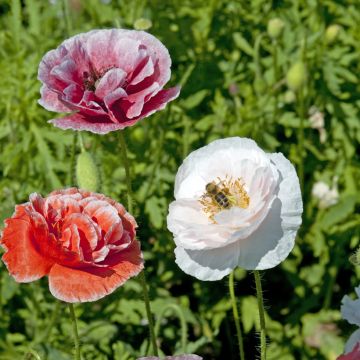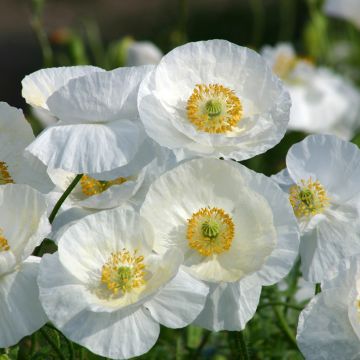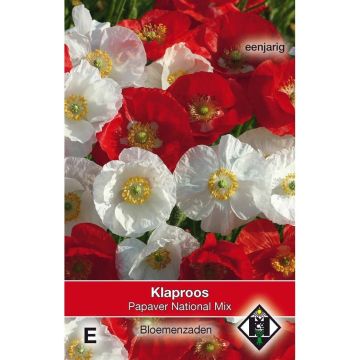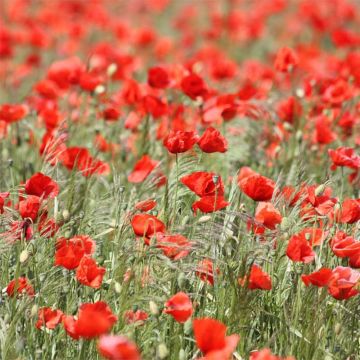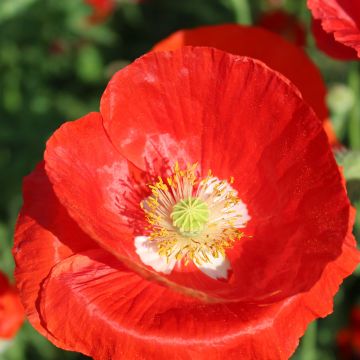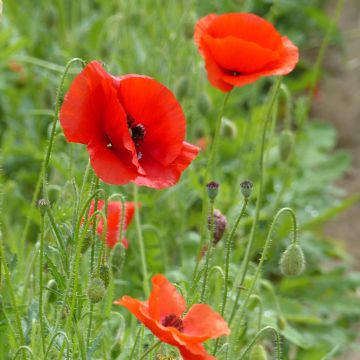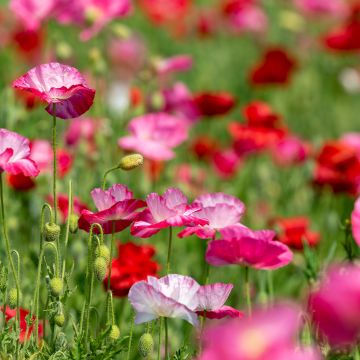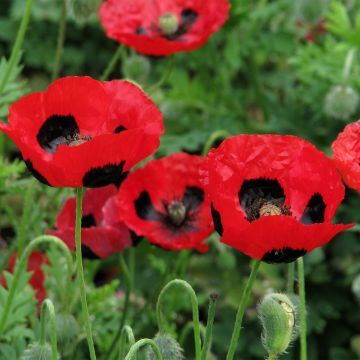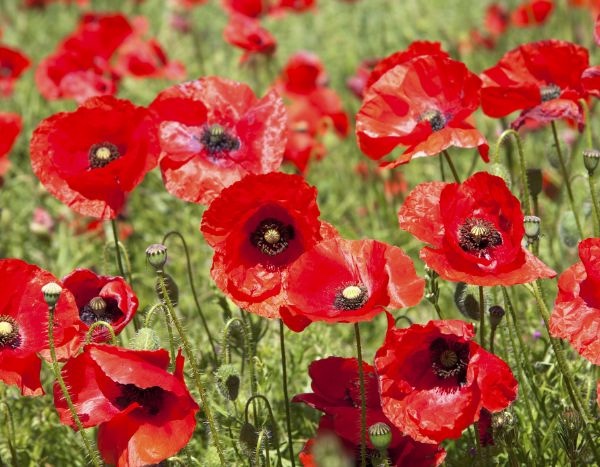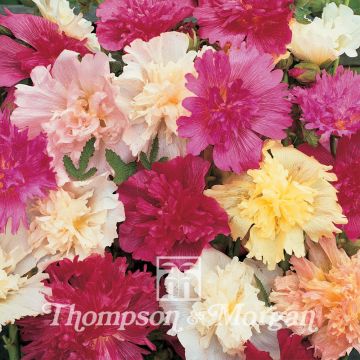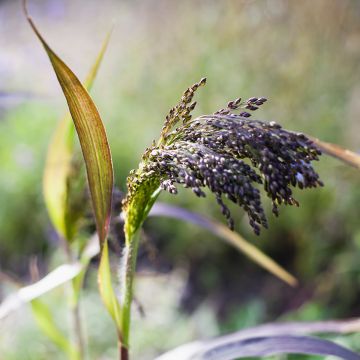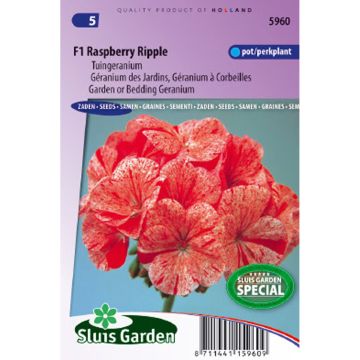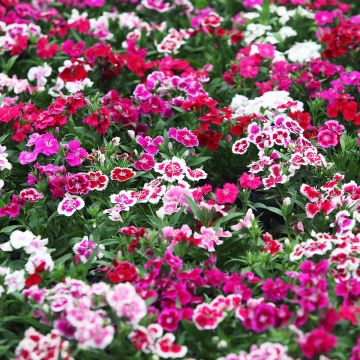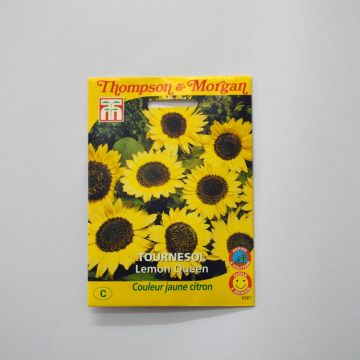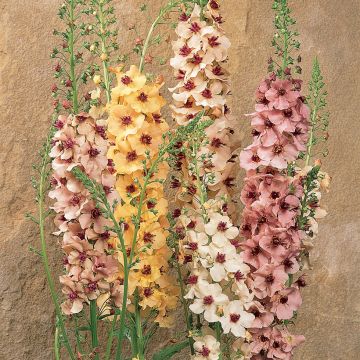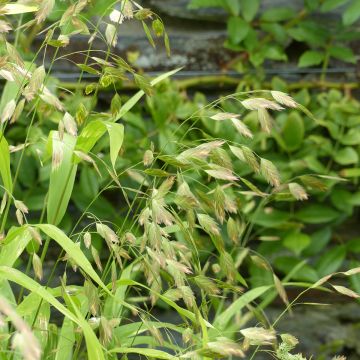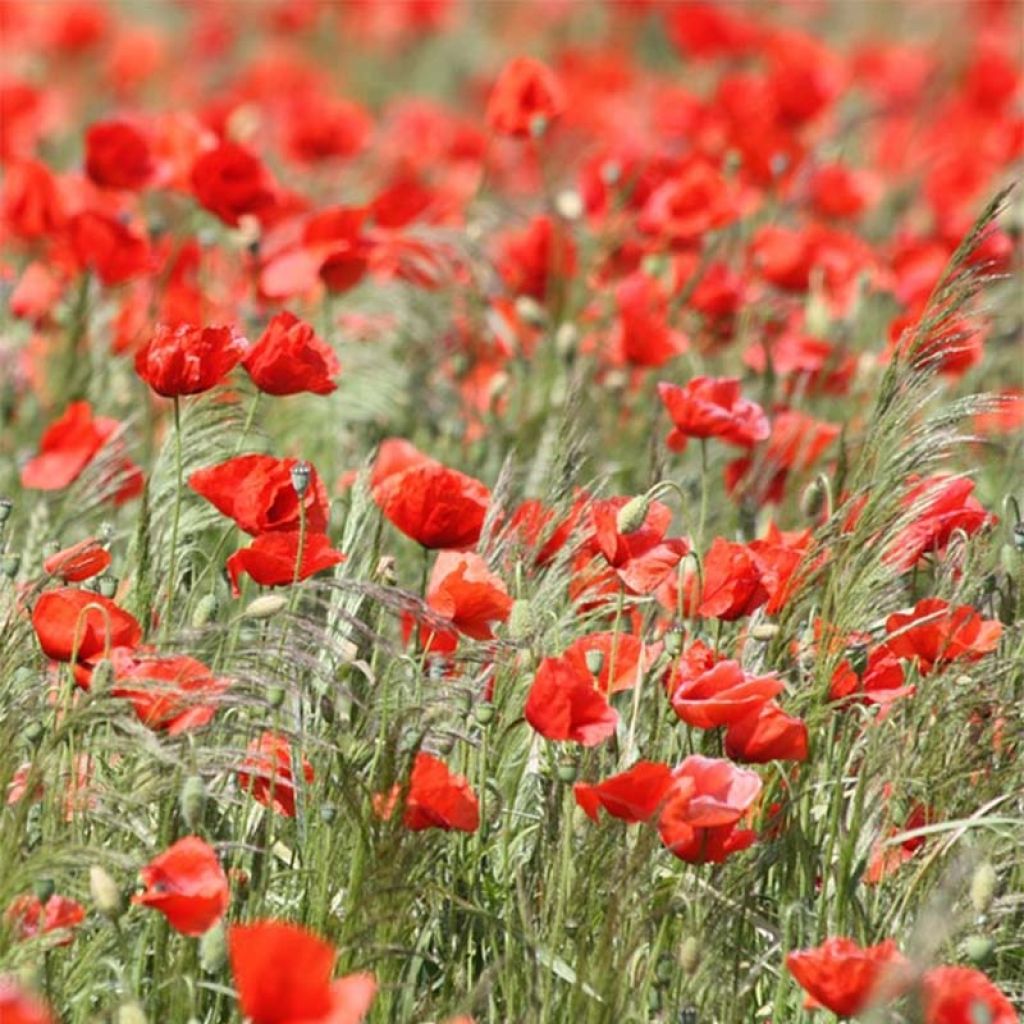

Papaver rhoeas - Organic seeds


Papaver rhoeas - Organic seeds
Papaver rhoeas - Organic seeds
Papaver rhoeas
Common poppy, corn poppy, corn rose, field poppy, Flanders poppy, red poppy, red weed
The seeds haven't germinated.
Sophie , 29/09/2023
Special offer!
Receive a €20 voucher for any order over €90 (excluding delivery costs, credit notes, and plastic-free options)!
1- Add your favorite plants to your cart.
2- Once you have reached €90, confirm your order (you can even choose the delivery date!).
3- As soon as your order is shipped, you will receive an email containing your voucher code, valid for 3 months (90 days).
Your voucher is unique and can only be used once, for any order with a minimum value of €20, excluding delivery costs.
Can be combined with other current offers, non-divisible and non-refundable.
Home or relay delivery (depending on size and destination)
Schedule delivery date,
and select date in basket
This plant carries a 6 months recovery warranty
More information
We guarantee the quality of our plants for a full growing cycle, and will replace at our expense any plant that fails to recover under normal climatic and planting conditions.
Description
Papaver rhoeas, better known as the red poppy or corn poppy, is an adorable annual weed in the countryside. Long persecuted in crop fields, it is making a comeback in gardens where room is made for more biodiversity. This pretty poppy puts out its crumpled scarlet corollas in summer, emerging like a beautiful surprise from neglected land, including limestone soil and degraded areas. A simple flower, ideal for easily creating an unforgettable scene. Its direct sowing is foolproof and it self-sows wherever it pleases.
The corn poppy, also called field poppy or simply poppy, is an annual plant in the Papaveraceae family. It is probably native to the eastern Mediterranean basin, including southern Europe, North Africa, and the Middle East. Growing very quickly, the plant reaches about 60 cm (24in) in height when flowering, with a width of 30 cm (12in). Fragile in appearance, like its thin, rough, and sparsely branched stems, this plant forms a clump of alternate leaves, divided into narrow and toothed lobes, whose full power is revealed when it inevitably emerges from freshly disturbed soils, from seeds that can sometimes be very old. When the stem is broken, it releases a white and milky sap. Flowering occurs from spring to summer, from May to August, depending on the climate and sowing date. The open cup-shaped flowers have four silky, slightly wrinkled petals, in deep red or scarlet, very eye-catching. The centre is equipped with numerous stamens with blue-black anthers. The flowers, pollinated by bees and other pollinating insects, give way to fruits that are green capsules containing a large number of fine seeds that will be dispersed by the wind.
At home in cottage gardens or wild and unmaintained gardens, poppies allow for the quick and effortless creation of infinitely brilliant seas of red blooms, in perfect harmony with the bright summer light. Although not very long-lasting in bouquets, poppy flowers have a crazy charm when they accompany nigellas, tall daisies, thistles, or the shifting foliage of grasses in flowerbeds. This annual plant, like cosmos, is unmatched for filling in embankments around new constructions, or occupying open spaces between other annuals or large late-flowering perennials such as sunflowers that will take over in full sun. If you still want to make bouquets with its flowers, you will need to cauterize the stems where they were cut, preventing the flowers from wilting during the day.
The poppy is the international symbol dedicated to the memory of Allied soldiers who died in combat during World War I.
Harvest
Plant habit
Foliage
Botanical data
Papaver
rhoeas
Papaveraceae
Common poppy, corn poppy, corn rose, field poppy, Flanders poppy, red poppy, red weed
East Asia
Annual
Other Flanders Poppy seeds
View all →Planting and care
Sow poppy seeds directly outdoors in spring or early autumn. Choose a sunny spot with well-prepared soil. Sow the fine seeds just below the surface, mixing them with sand or fine compost to sow less densely. Water regularly, especially during dry periods. Germination usually takes 18 to 22 days.
When the young poppy plants are large enough to handle, thin the seedlings and space them 30cm (12in) apart. They should not lack water or nutrients in summer or during flowering. These plants adapt their growth cycle to the climate and readily self-seed in the garden. In warm southern regions, it is preferable to sow in early autumn or late winter, resulting in a spring flowering before the arrival of summer drought. In cooler northern areas, on the other hand, spring-sown seeds produce a summer flowering.
Remove faded flowers if you want to prevent spontaneous self-seeding. While they prefer clay and limestone soils, poppies are undemanding plants that adapt to most well-worked soils. Their seeds retain their viability for a long time, and it is not uncommon for seedlings to reappear years after a failed sowing due to soil disturbance.
Poppies do not have specific pests in our gardens.
Important note: all poppies are toxic. However, the seeds produced by the P. somniferum and P. paeoniflorum species can be consumed. Generally, the seeds are used in baking recipes (bread, brioche, etc.).
Seedlings
Care
Intended location
Planting & care advice
-
, onOrder confirmed
Reply from on Promesse de fleurs
Similar products
Haven't found what you were looking for?
Hardiness is the lowest winter temperature a plant can endure without suffering serious damage or even dying. However, hardiness is affected by location (a sheltered area, such as a patio), protection (winter cover) and soil type (hardiness is improved by well-drained soil).

Photo Sharing Terms & Conditions
In order to encourage gardeners to interact and share their experiences, Promesse de fleurs offers various media enabling content to be uploaded onto its Site - in particular via the ‘Photo sharing’ module.
The User agrees to refrain from:
- Posting any content that is illegal, prejudicial, insulting, racist, inciteful to hatred, revisionist, contrary to public decency, that infringes on privacy or on the privacy rights of third parties, in particular the publicity rights of persons and goods, intellectual property rights, or the right to privacy.
- Submitting content on behalf of a third party;
- Impersonate the identity of a third party and/or publish any personal information about a third party;
In general, the User undertakes to refrain from any unethical behaviour.
All Content (in particular text, comments, files, images, photos, videos, creative works, etc.), which may be subject to property or intellectual property rights, image or other private rights, shall remain the property of the User, subject to the limited rights granted by the terms of the licence granted by Promesse de fleurs as stated below. Users are at liberty to publish or not to publish such Content on the Site, notably via the ‘Photo Sharing’ facility, and accept that this Content shall be made public and freely accessible, notably on the Internet.
Users further acknowledge, undertake to have ,and guarantee that they hold all necessary rights and permissions to publish such material on the Site, in particular with regard to the legislation in force pertaining to any privacy, property, intellectual property, image, or contractual rights, or rights of any other nature. By publishing such Content on the Site, Users acknowledge accepting full liability as publishers of the Content within the meaning of the law, and grant Promesse de fleurs, free of charge, an inclusive, worldwide licence for the said Content for the entire duration of its publication, including all reproduction, representation, up/downloading, displaying, performing, transmission, and storage rights.
Users also grant permission for their name to be linked to the Content and accept that this link may not always be made available.
By engaging in posting material, Users consent to their Content becoming automatically accessible on the Internet, in particular on other sites and/or blogs and/or web pages of the Promesse de fleurs site, including in particular social pages and the Promesse de fleurs catalogue.
Users may secure the removal of entrusted content free of charge by issuing a simple request via our contact form.
The flowering period indicated on our website applies to countries and regions located in USDA zone 8 (France, the United Kingdom, Ireland, the Netherlands, etc.)
It will vary according to where you live:
- In zones 9 to 10 (Italy, Spain, Greece, etc.), flowering will occur about 2 to 4 weeks earlier.
- In zones 6 to 7 (Germany, Poland, Slovenia, and lower mountainous regions), flowering will be delayed by 2 to 3 weeks.
- In zone 5 (Central Europe, Scandinavia), blooming will be delayed by 3 to 5 weeks.
In temperate climates, pruning of spring-flowering shrubs (forsythia, spireas, etc.) should be done just after flowering.
Pruning of summer-flowering shrubs (Indian Lilac, Perovskia, etc.) can be done in winter or spring.
In cold regions as well as with frost-sensitive plants, avoid pruning too early when severe frosts may still occur.
The planting period indicated on our website applies to countries and regions located in USDA zone 8 (France, United Kingdom, Ireland, Netherlands).
It will vary according to where you live:
- In Mediterranean zones (Marseille, Madrid, Milan, etc.), autumn and winter are the best planting periods.
- In continental zones (Strasbourg, Munich, Vienna, etc.), delay planting by 2 to 3 weeks in spring and bring it forward by 2 to 4 weeks in autumn.
- In mountainous regions (the Alps, Pyrenees, Carpathians, etc.), it is best to plant in late spring (May-June) or late summer (August-September).
The harvesting period indicated on our website applies to countries and regions in USDA zone 8 (France, England, Ireland, the Netherlands).
In colder areas (Scandinavia, Poland, Austria...) fruit and vegetable harvests are likely to be delayed by 3-4 weeks.
In warmer areas (Italy, Spain, Greece, etc.), harvesting will probably take place earlier, depending on weather conditions.
The sowing periods indicated on our website apply to countries and regions within USDA Zone 8 (France, UK, Ireland, Netherlands).
In colder areas (Scandinavia, Poland, Austria...), delay any outdoor sowing by 3-4 weeks, or sow under glass.
In warmer climes (Italy, Spain, Greece, etc.), bring outdoor sowing forward by a few weeks.






























